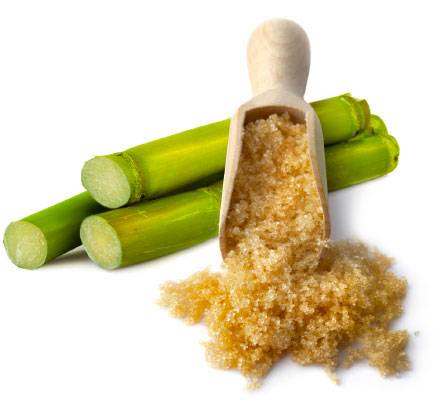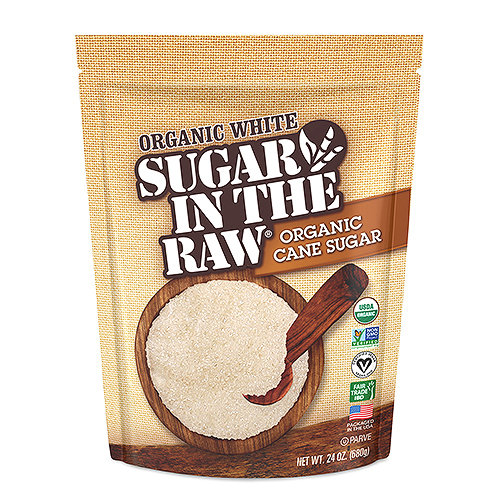An In-Depth Guide to the Environmental Effect and Sustainability Practices in Walking Stick Sugar Handling
The ecological influence of walking cane sugar handling presents a complex array of challenges that warrant careful evaluation. From soil deterioration and extreme water usage to the carbon footprint related to growing and production, the repercussions of standard methods are significant. On the other hand, the adoption of innovative sustainability measures offers a pathway towards extra liable manufacturing techniques. Comprehending the interplay between these concerns is vital for stakeholders in the sector. What details techniques can be carried out to strike a balance between performance and ecological stewardship? The solutions exist in a better look at both the obstacles and prospective services.
Introduction of Cane Sugar Handling
Walking stick sugar handling includes a collection of methodical actions that transform sugarcane right into refined sugar. At first, harvested sugarcane is carried to processing centers, where it undertakes cleaning to remove soil and debris. Following this, the cane is squashed to draw out juice, which is after that clarified by removing contaminations through home heating and the addition of lime.
The clarified juice goes through dissipation, where water is gotten rid of to focus the sugar content. These crystals are separated from the staying syrup using centrifugation, resulting in raw sugar.
The final product is then dried and packaged for distribution. Throughout this entire process, preserving performance and quality assurance is vital to guarantee the sugar satisfies sector criteria. Each action in walking cane sugar handling not just adds to the last item yet also has implications for resource usage and waste generation, establishing the phase for conversations on sustainability and ecological influences linked with sugar manufacturing.
Ecological Obstacles of Manufacturing
The manufacturing of walking stick sugar provides several significant environmental challenges that warrant focus. One key problem is the comprehensive use agrochemicals, including pesticides and fertilizers, which can lead to dirt destruction, biodiversity loss, and contamination of regional water sources. The overflow from sugarcane fields frequently carries these chemicals right into neighboring ecological communities, interfering with water life and affecting the health of areas reliant on these water bodies.
An additional difficulty is the high energy intake connected with sugarcane processing. The boiling and refining phases call for considerable heat, largely produced by melting fossil gas, contributing to greenhouse gas exhausts. Furthermore, the expansive acreage required for sugarcane cultivation can cause deforestation and environment devastation, additional exacerbating environment change and harmful wildlife.
In addition, the labor methods in some areas increase moral concerns, as employees may encounter poor working problems and inadequate earnings. This situation usually continues a cycle of destitution in regional areas. Cane Sugar Processing. Dealing with these ecological challenges is vital for developing extra sustainable methods in walking cane sugar production, eventually benefiting both the atmosphere and the areas associated with this sector
Water and Land Usage Impact
Water sources and land utilization are vital parts in the cane sugar sector that substantially influence the environment. The growing of sugarcane needs significant water input, with estimates suggesting that it can take in as much as 2,000 litres find here of water per kilogram of sugar created. This intensive use of water commonly leads to depletion of local water resources, impacting not just the sugarcane haciendas but also surrounding environments and areas that count on the very same water sources for agriculture and residential usage.

In addition, land use for sugarcane farming can result in logging and the conversion of natural habitats right into monoculture ranches. This method diminishes biodiversity, pop over to this site disrupts local ecosystems, and adds to soil deterioration. The expansion of sugarcane areas typically encroaches on beneficial agricultural land, developing competition for resources between food and biofuel production.
Sustainable practices, such as optimizing irrigation techniques and carrying out plant turning, are necessary to alleviate these impacts. By embracing more efficient water usage and land monitoring strategies, the cane sugar market can minimize its eco-friendly impact, guaranteeing a balance between farming efficiency and ecological conservation.
Greenhouse Gas Emissions
Greenhouse gas exhausts stand for a significant environmental issue within the walking stick sugar processing market, especially as farming practices expand to meet worldwide demand. The cultivation of sugarcane, a crop that thrives in tropical climates, relies heavily on artificial plant foods and pesticides, which contribute to nitrous oxide emissions. In addition, land-use adjustments, consisting of logging for brand-new sugarcane vineyards, release carbon dioxide stored in vegetation and soil.
During processing, power usage is another significant resource of greenhouse gas emissions - Cane Sugar Processing. Many sugar mills make use of nonrenewable fuel sources to power machinery and create warm, resulting in substantial carbon impacts. Additionally, the transport of raw sugarcane and completed products includes layers of discharges via gas combustion in lorries
This includes examining existing agricultural methods, refining methods, and transportation systems to determine locations for renovation and reduction. Resolving greenhouse gas emissions is essential for promoting a much more lasting walking cane sugar industry in an altering environment.

Sustainable Practices and Innovations
Lasting methods and technologies are significantly vital in the walking cane sugar processing sector as recommended you read stakeholders seek to lower environmental influences while preserving performance. One considerable advancement is the application of incorporated crop management, which maximizes resource use by incorporating soil monitoring, insect control, and plant rotation methods. This strategy enhances return while minimizing chemical inputs and protecting dirt health.
In addition, the adoption of eco-friendly energy sources, such as biomass from sugarcane deposits, has actually acquired grip - Cane Sugar Processing. By transforming waste products into power, refining facilities can decrease their dependence on nonrenewable fuel sources, consequently decreasing greenhouse gas emissions
Water administration techniques have actually also seen enhancements via the recycling and reusing of water in handling plants, considerably minimizing freshwater intake. Innovations in technology, such as precision agriculture, make it possible for farmers to monitor crop health and wellness and source use extra effectively, making sure lasting growing techniques.
In addition, certification programs like Fair Trade and Rainforest Alliance encourage environmentally responsible farming methods and advertise social equity within the supply chain. By welcoming these lasting techniques and technologies, the walking cane sugar handling sector can boost its strength and add favorably to ecological stewardship.
Final Thought
The ecological effect of walking stick sugar handling provides considerable difficulties, including soil degradation, high water intake, and greenhouse gas exhausts, along with honest worries connected to labor methods. Dealing with these issues via lasting practices, such as incorporated plant administration, sustainable energy adoption, and water recycling, is essential. By advertising ecologically accountable and socially equitable methods in sugar manufacturing, the market can mitigate its damaging impacts, making sure an extra sustainable future for both neighborhoods and environments associated with this market.
Walking cane sugar processing involves a collection of systematic actions that change sugarcane into refined sugar. Each step in walking stick sugar handling not only contributes to the last item however also has ramifications for source usage and waste generation, setting the phase for discussions on sustainability and ecological effects linked with sugar production.
Greenhouse gas exhausts represent a substantial environmental problem within the walking stick sugar handling industry, specifically as agricultural methods increase to meet international demand.Sustainable techniques and developments are significantly important in the walking cane sugar handling industry as stakeholders look for to reduce environmental influences while maintaining efficiency.The ecological impact of walking stick sugar handling offers significant difficulties, consisting of dirt degradation, high water usage, and greenhouse gas discharges, along with ethical issues associated to labor techniques.